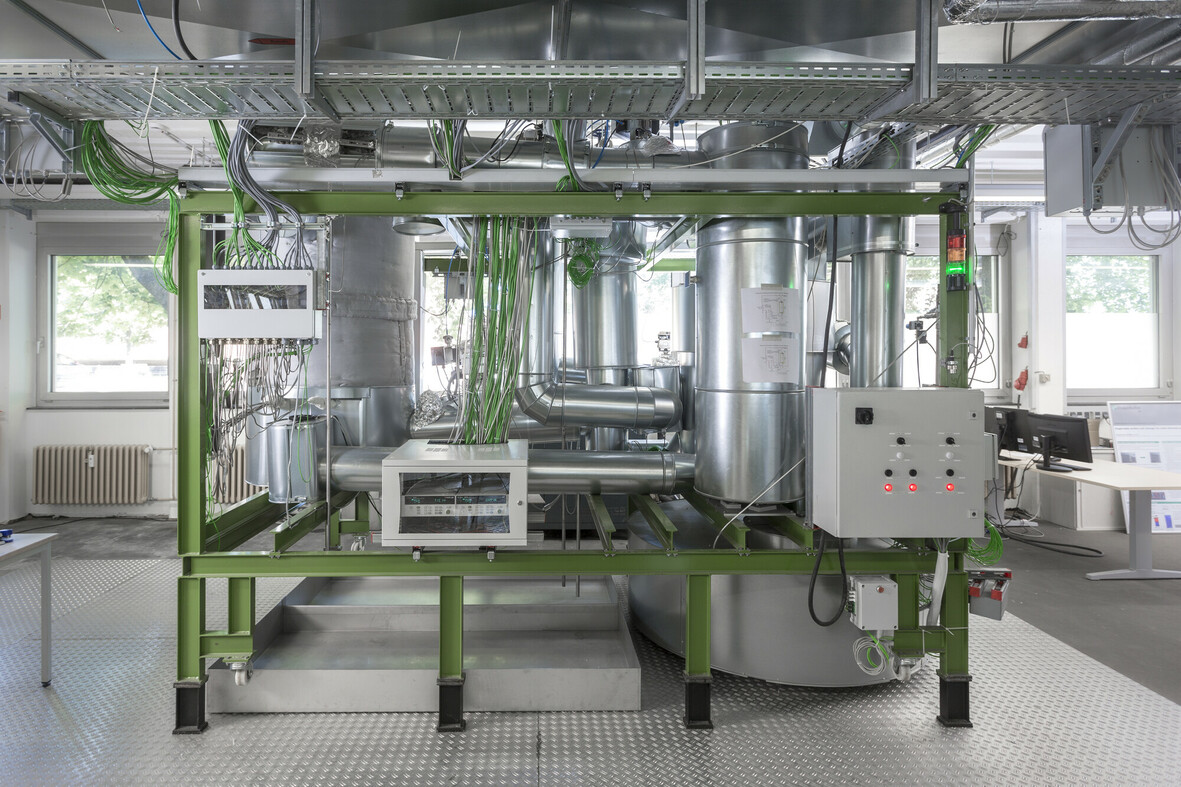News #24
New Project “HybridKraft” Launched: PV Electricity Shall Increase Efficiency of Solar Thermal Power Plants
The hybrid combination of solar thermal power plants, photovoltaics and storage promises cost-effective and stable electricity generation. Just such a system is to be developed in the newly launched „HybridKraft" project, funded by the German Federal Ministry of Economics and Climate Protection and headed by the Fraunhofer Institute for Solar Energy Systems ISE. The project focus is on developing an electric heater for molten salt storage tank that is suitable for large-scale power plants. Such solutions which convert renewable electricity into high-temperature heat for direct use or storage are also interesting for industrial applications.

Solar thermal power plants are more expensive to build than photovoltaic power plants, however, solar thermal plants can supply electricity at night and their thermal storage system is cheaper than battery storage in photovoltaic systems.
In the "HybridKraft" project, the advantages of both technologies are to be combined with the goal of achieving a cost-optimized system: during the day, the electricity comes predominantly from the photovoltaic system. After sunset, the thermal energy in the molten salt storage tank, supplied by the solar thermal power plant, is used to generate electricity by means of a turbine. If the photovoltaic power plant is oversized to provide for days with less solar radiation, then on good solar days the surplus PV electricity can be used to heat the molten salt storage tank electrically as well.
An already established technology for this combination is the classic parabolic trough power plants. In the "HybridKraft" project, the research team intends to test an electric heater for liquid salts and their use in energy storage systems. The potential of these heaters will be evaluated in combination with linear concentrating thermal Fresnel collectors.
Although Fresnel collectors with direct molten salt in the absorber tube can provide heat up to 545 degrees Celsius, the PV current will be used to optimize the exit temperature of the heat transfer fluid from the receiver."The PV electricity allows us to raise the storage density of the molten salt and the operating temperature of the turbine, and thus the system efficiency," explains project manager Shahab Rohani from Fraunhofer ISE.
In the project, the prototype of a solar-powered heater with an output of one megawatt is to be developed. This will be tested in the Fraunhofer ISE pilot plant in closed-loop operation with a molten salt storage tank. Based on the design concept of the prototype, the test results and the simulation studies, a design for large capacity electric heaters will be created. Concepts will be developed for different locations and applications.
As project partners, power plant developer Frenell GmbH and John Cockerill UVK GmbH are entrusted with developing the components and integrating them into solar thermal power plants. Associated partner BASF Stationary Energy Storage GmbH, a wholly owned BASF subsidiary, is handling the review of specifications and comparison of electro-chemical storage, providing information on sodium-sulfur batteries and adapting their design to meet the power plant requirements.
Powerful electric heater for industrial processes
The electric heater is not only of interest for use in solar thermal power plants in the earth's sunbelt, but wherever electricity from renewable generation plants is temporarily available in surplus. "This can be converted into heat, which can either be used directly for high-temperature industrial processes from 150 to 550 degrees Celsius or stored in a Carnot battery for later reconversion into electricity," explains Dr. Thomas Fluri, group leader of Climate Neutral Industrial Processes and High Temperature Storage at Fraunhofer ISE.
This modular electric heater will be evaluated with respect to optimized mechanical stability and flow control, improved connectivity to the power infrastructure, feed-in compatibility of PV power, and increased operating voltage levels. Based on these evaluations, further system optimizations can be made in terms of operating conditions, economic sensitivity, and simplification of the system.
Last modified: